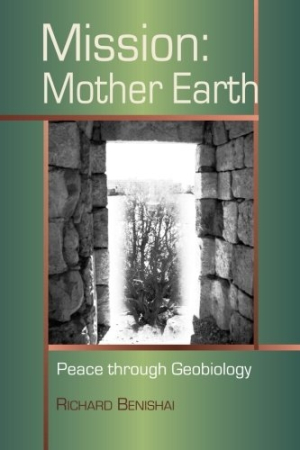Mission: Mother Earth
Peace through Geobiology
At the heart of Benishai’s writing is the knowledge that there is a genuinely impressive person devoting his life to healing the planet.
Geobiology—as a broad term for mystic, natural, and supernatural interplay on a multi-dimensional level—is explored as a means to achieving terrestrial peace, in Richard Benishai’s Mission: Mother Earth. Part autobiography, part guidebook, this book explodes with theories and field studies to explain the unexplained and to convince readers, through an impassioned narrative, that Benishai’s work is helping to realign the balance of energies within our planet.
This is not a book for anyone familiar with traditional geobiological studies of the impact biological inhabitants have on their physical environment. The geobiology of Benishai’s world is that of crystals existing in another dimension creating boundaries of positive energy around a sacred site, and homes built over subterranean currents or faults causing insomnia and cancer.
Benishai enthusiastically crams his lifetime of study with unorthodox machinery and unfamiliar techniques into a barrage of measurements and maps. In fewer than 200 pages, he has woven together his own life story, his mission to save the earth, his fellowship with divine inspiration from “The Family,” and his quest to bring harmony to Israel by identifying eighteen locations of connected energy. Yet, it is hard not to raise an eyebrow at someone who is “receiving messages” about how to use “mental intervention” in order to “block subterranean water currents, diverting energy lines.” But Benishai’s intention is true, and whatever his powers may be, there is a sense of hope in them even as they defy common sense.
The first half of the book attempts to orient the reader both to Benishai’s interpretation of geobiology as well as to his major project in Israel. The charts and illustrations, all very impressive, are not supported well, and it isn’t clear whether these are inventions of Benishai’s or whether they have some basis in the studies of his predecessors. The tools and processes of measurement are subjective. He is occasionally clumsy with language, holding together barely connected thoughts or interjecting provocative non sequiturs like “Did you know that a cathedral is a great woman lying supine and waiting to be divinely impregnated?”
Given the fantastic nature of his subject matter and the comparatively brief chronicle of his mission, Benishai has created a mind-bending narrative for readers with imagination and the willingness to follow his thoughts wherever they might lead.
Reviewed by
Sara Budzik
Disclosure: This article is not an endorsement, but a review. The publisher of this book provided free copies of the book to have their book reviewed by a professional reviewer. No fee was paid by the publisher for this review. Foreword Reviews only recommends books that we love. Foreword Magazine, Inc. is disclosing this in accordance with the Federal Trade Commission’s 16 CFR, Part 255.

